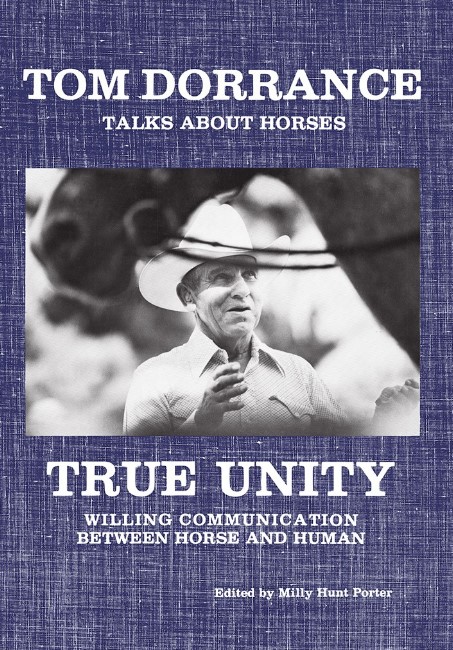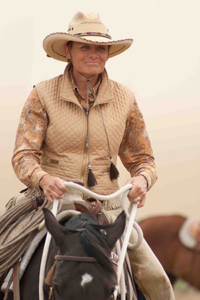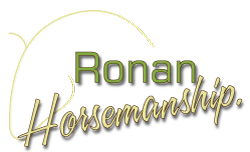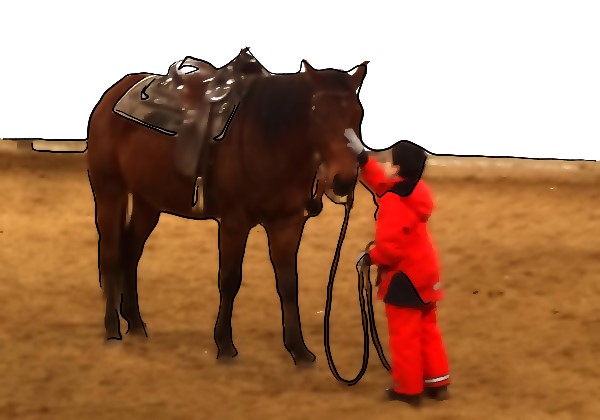The other day, I was preparing pancakes and my son came with a question: "why do you add baking powder?", and here I go for a casual lesson about...
Continue Reading →September, 2013
How to desensitize a horse to the rope? / video
Why should you desensitize your horse to the rope? The answer is obvious for ranch workers and ropers, yet such exercise should not be forgotten by all the others.
Exercises: Groundwork – Half Circle / video
The Half Circle exercise is a continuation of the Full Circle. It is strongly recommended to blend both exercises as soon as you master them both. Actually, it is only one exercise cut in two parts so we can learn it _ horses do not need this to understand and perform. The purpose of this exercise is to improve the mobility of the horse, its capacity to move the hind end from the front end separately.
Exercises: Groundwork – Refined Backing Up / video
This exercise is the refined level of backing a horse up from the ground. This will help to build the feeling, lightness and softness that will be necessary later on the saddle. The goal is to teach the horse to back up gently, to be very light and to move smoothly backward on a curve.
Books: True Unity by Tom Dorrance / quote
Tom Dorrance is the most important reference when we deal with modern Natural Horsemanship in North America. He has launched this new wave of a more respectful horsemanship, although he probably never did it on purpose. This horseman was greatly skilled and reputed to be able to start a wild colt within a few hours, not by magic, simply by listening to the horse and speaking to it in a clear, gentle and comprehensive language.
The book contains different texts: some are written or said by Tom Dorrance _ they are the most interesting of course _, and some are written by students. Students are sometimes quite famous people such as Bill Dorrance, Martin Black, Bryan Neubert or Joe Wolters. Yet, I tend to be very critical with this kind of texts as people like to praise and idolize, and usually forget to be objective. Still, we can find some interesting information in these “Students’ feedbacks”.
True Unity is a very important resource as it contains lots of wisdom, all the natural horsemanship philosophy lays in these pages. That is also its main defect: you will not find any practical information, any exercise in the book. As in most books written by genius, it is full of treasures, but you have to dig hard to find them! In the present post, I try to dig up some of these treasures. I can not write about all of them as it would be too long and fastidious though.
There are three words, three concepts on which is based all Tom Dorrance’s approach to horses. The same concepts have been used to divide his texts in the book:

Exercises: Groundwork – Full Circle
Fundamental groundwork exercises are designed to teach the basic social rules to our horses: don't bite, don't buck, don't hit, don't push!...
Continue Reading →How to bridle your horse? / video
The goal of that post is not to go through all the measurement process, neither to deal with the good headstall or bit. I have just seen such strange _ and sometimes painful _ methods to bridle a horse that I feel interesting to share this information. I did not invent anything here: many good horsemen use the following method, I experienced it and I think it is the most comfortable both for the horse and the horseman or horsewoman.
How to prepare a horse to bridle? / video
Well, there are two options here: first classic answer is “you don’t, you put your hand in the mouth and it’s gonna open it, period!” The second option is slightly different and consists in teaching different steps to your horse to make him want the bit and the bridle: lower the head, tip it inside, open the mouth, take the bit and let the horseman or horsewoman put the headstall on.
Why is physical punishment to a horse never acceptable? / quote
7 Clinics, Betty Staley
Betty Staley talks about punishment very well in this series of DVDs and I can not help but convey her words of wisdom. Punishment, such as hitting the horse with your hand, your whip or your spurs, is just a completely useless act. Ultimately, such behavior can put you at risk and you obtain a result that is opposite to what you look for.
We should always keep in mind that horses have a very strong sense of self-preservation which, combined to a remarkable memory, will teach them very quickly to be afraid of humans if approached and worked with this punishment method.
For those who took some time to think about life, about their relationship with other beings (human or animal), they will probably not need to be convinced. For the others, as life does not always leave us the opportunity to think about real, deep and essential questions, some more practical arguments should be enough to convince them:


 ENGLISH
ENGLISH DEUTSCH
DEUTSCH ESPAÑOL
ESPAÑOL FRANÇAIS
FRANÇAIS